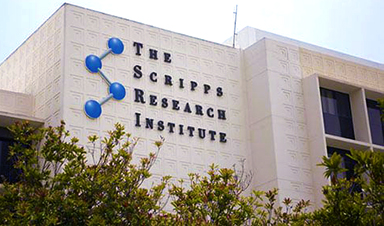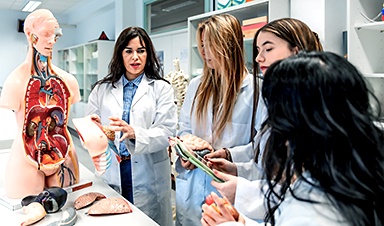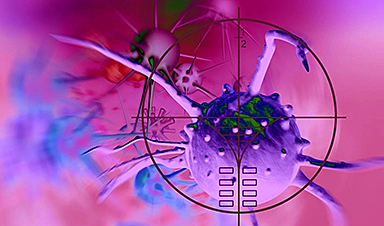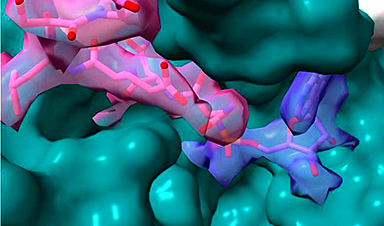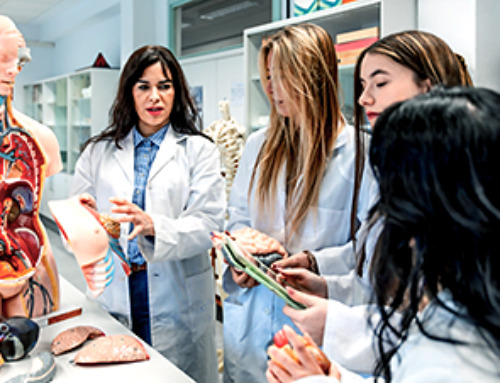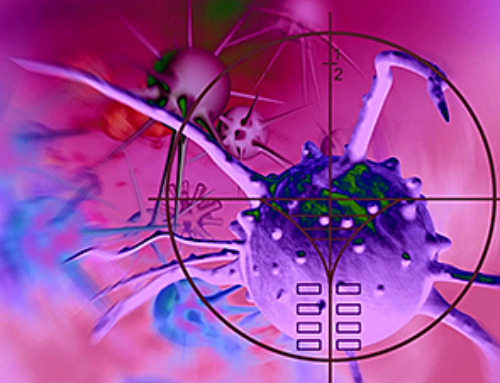Results from a Scripps Research and UNC team pave the way for a vaccine and therapeutic antibodies that could be stockpiled to fight future coronavirus pandemics.
A team of scientists from Scripps Research and the University of North Carolina (UNC) has found antibodies in the blood of certain COVID-19 donors that can block infection from a broad set of coronaviruses—specifically, in people who have recovered from the virus and were then vaccinated. They found this includes not only the COVID-19-causing SARS-CoV-2, but also SARS-CoV-1 and MERS-CoV.
The scientists’ detailed study of the antibodies and their virus binding sites, reported on February 15, 2023, in the journal Immunity, could lead to the development of a broad coronavirus vaccine and related antibody therapeutics. Both could be used against future coronavirus pandemics as well as any future variants of SARS-CoV-2.
The other Scripps Research co-senior authors were Dennis Burton, PhD, professor and James and Jessie Minor Chair of the Department of Immunology and Microbiology, and Ian Wilson, PhD, Hansen Professor of Structural Biology and chair of the Department of Integrative Structural and Computational Biology. The co-senior authors from UNC were professor Ralph Baric, PhD, and assistant professor Lisa Gralinski, PhD.
SARS-CoV-2, along with SARS-CoV-1 (the cause of the 2002-04 SARS outbreak) and MERS-CoV (the cause of deadly Middle East Respiratory Syndrome), belong to a broad grouping of coronaviruses known as betacoronaviruses. These viruses mutate at a modestly high rate, creating a significant challenge for the development of vaccines and antibody therapies against them. Thus, in the case of SARS-CoV-2, although existing vaccines have been very helpful in limiting the toll of disease and death from the pandemic, new SARS-CoV-2 variants have emerged that can spread even among vaccine recipients.
Over the past two years, however, the Andrabi/Burton and Wilson laboratories have been finding evidence that SARS-CoV-2 and other betacoronaviruses have a vulnerable site that does not mutate much. This site, which is in the S2 region (or base) of the viral spike protein, is relatively conserved on betacoronaviruses that infect a variety of animal species. By contrast, current SARS-CoV-2 vaccines mainly target the viral spike protein’s relatively mutable S1 region, with which the virus binds to host-cell receptors.
The S2 site plays a key role in how betacoronaviruses progress from receptor-binding to the membrane fusion that enables entry into host cells in the respiratory tract. In a study reported last year, the Andrabi/Burton and Wilson laboratories found that some human antibodies can bind to this site on SARS-CoV-2 in a way that apparently disrupts viral fusion and blocks infection. The existence of such a vulnerable site raises the possibility of targeting it to provide both long-lasting and broad protection against betacoronaviruses. Therefore, the researchers, for the new study, made a more comprehensive search for anti-S2 antibodies in blood samples from human volunteers.
These volunteers were individuals who had recovered from COVID-19, had been vaccinated, or had recovered from COVID-19 and then had been vaccinated. Somewhat to the researchers’ surprise, they found that antibodies to the vulnerable S2 site were present in the vast majority of volunteers in the latter group—people who had recovered from COVID-19 and then had been vaccinated—but at a much lower frequency in the others. Overall, the researchers identified and characterized 32 of these S2-targeting antibodies.
In lab virus neutralization studies and in virus-challenge studies with mice at UNC, the researchers found that several of these antibodies provide protection of unprecedented breadth— not only against SARS-CoV-2 but also SARS-CoV-1 and MERS-CoV betacoronaviruses.
“In principle, a vaccination strategy that can induce such antibodies is likely to provide broad protection against a diverse spectrum of betacoronaviruses,” says Burton.
Structural studies of several of the antibodies when bound to S2 illuminated their common binding sites and modes of binding, providing key information that should aid the development of future vaccines targeting this region.
“Targeted rational vaccine strategies could take advantage of this molecular information of the interactions of these antibodies with the S2 domain to inform the design of pan-betacoronavirus vaccines,” says Wilson.
Indeed, the researchers have already applied their findings to the initial design and testing of a potential “pan-betacoronavirus” vaccine candidate, which if successful could be stockpiled to limit future pandemics. The investigators also envision a therapeutic mix of different S2-targeting antibodies, perhaps as a cocktail with antibodies to other spike regions, that could be taken to prevent infection by a novel betacoronavirus or to reduce disease in those already infected.
News
Repurposed drugs could calm the immune system’s response to nanomedicine
An international study led by researchers at the University of Colorado Anschutz Medical Campus has identified a promising strategy to enhance the safety of nanomedicines, advanced therapies often used in cancer and vaccine treatments, [...]
Nano-Enhanced Hydrogel Strategies for Cartilage Repair
A recent article in Engineering describes the development of a protein-based nanocomposite hydrogel designed to deliver two therapeutic agents—dexamethasone (Dex) and kartogenin (KGN)—to support cartilage repair. The hydrogel is engineered to modulate immune responses and promote [...]
New Cancer Drug Blocks Tumors Without Debilitating Side Effects
A new drug targets RAS-PI3Kα pathways without harmful side effects. It was developed using high-performance computing and AI. A new cancer drug candidate, developed through a collaboration between Lawrence Livermore National Laboratory (LLNL), BridgeBio Oncology [...]
Scientists Are Pretty Close to Replicating the First Thing That Ever Lived
For 400 million years, a leading hypothesis claims, Earth was an “RNA World,” meaning that life must’ve first replicated from RNA before the arrival of proteins and DNA. Unfortunately, scientists have failed to find [...]
Why ‘Peniaphobia’ Is Exploding Among Young People (And Why We Should Be Concerned)
An insidious illness is taking hold among a growing proportion of young people. Little known to the general public, peniaphobia—the fear of becoming poor—is gaining ground among teens and young adults. Discover the causes [...]
Team finds flawed data in recent study relevant to coronavirus antiviral development
The COVID pandemic illustrated how urgently we need antiviral medications capable of treating coronavirus infections. To aid this effort, researchers quickly homed in on part of SARS-CoV-2's molecular structure known as the NiRAN domain—an [...]
Drug-Coated Neural Implants Reduce Immune Rejection
Summary: A new study shows that coating neural prosthetic implants with the anti-inflammatory drug dexamethasone helps reduce the body’s immune response and scar tissue formation. This strategy enhances the long-term performance and stability of electrodes [...]
Scientists discover cancer-fighting bacteria that ‘soak up’ forever chemicals in the body
A family of healthy bacteria may help 'soak up' toxic forever chemicals in the body, warding off their cancerous effects. Forever chemicals, also known as PFAS (per- and polyfluoroalkyl substances), are toxic chemicals that [...]
Johns Hopkins Researchers Uncover a New Way To Kill Cancer Cells
A new study reveals that blocking ribosomal RNA production rewires cancer cell behavior and could help treat genetically unstable tumors. Researchers at the Johns Hopkins Kimmel Cancer Center and the Department of Radiation Oncology and Molecular [...]
AI matches doctors in mapping lung tumors for radiation therapy
In radiation therapy, precision can save lives. Oncologists must carefully map the size and location of a tumor before delivering high-dose radiation to destroy cancer cells while sparing healthy tissue. But this process, called [...]
Scientists Finally “See” Key Protein That Controls Inflammation
Researchers used advanced microscopy to uncover important protein structures. For the first time, two important protein structures in the human body are being visualized, thanks in part to cutting-edge technology at the University of [...]
AI tool detects 9 types of dementia from a single brain scan
Mayo Clinic researchers have developed a new artificial intelligence (AI) tool that helps clinicians identify brain activity patterns linked to nine types of dementia, including Alzheimer's disease, using a single, widely available scan—a transformative [...]
Is plastic packaging putting more than just food on your plate?
New research reveals that common food packaging and utensils can shed microscopic plastics into our food, prompting urgent calls for stricter testing and updated regulations to protect public health. Beyond microplastics: The analysis intentionally [...]
Aging Spreads Through the Bloodstream
Summary: New research reveals that aging isn’t just a local cellular process—it can spread throughout the body via the bloodstream. A redox-sensitive protein called ReHMGB1, secreted by senescent cells, was found to trigger aging features [...]
AI and nanomedicine find rare biomarkers for prostrate cancer and atherosclerosis
Imagine a stadium packed with 75,000 fans, all wearing green and white jerseys—except one person in a solid green shirt. Finding that person would be tough. That's how hard it is for scientists to [...]
Are Pesticides Breeding the Next Pandemic? Experts Warn of Fungal Superbugs
Fungicides used in agriculture have been linked to an increase in resistance to antifungal drugs in both humans and animals. Fungal infections are on the rise, and two UC Davis infectious disease experts, Dr. George Thompson [...]
